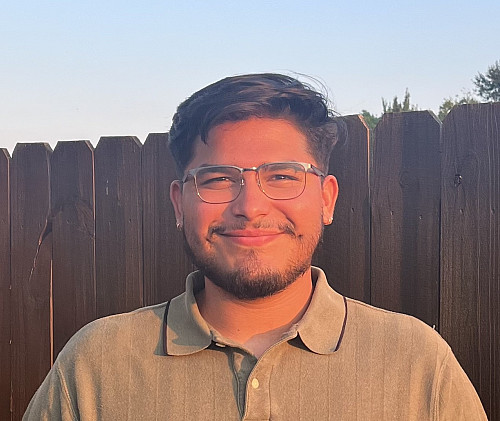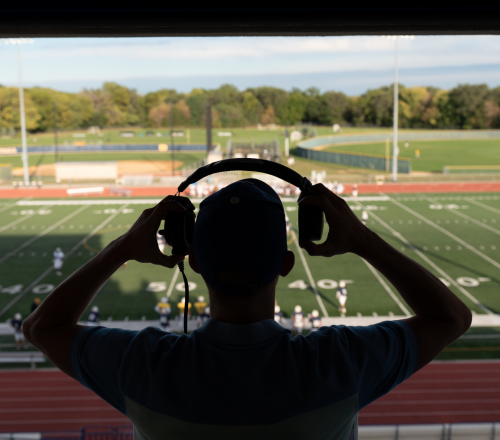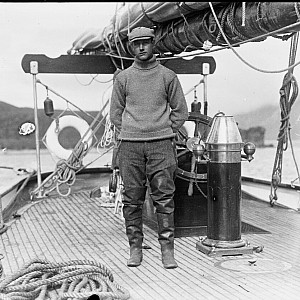Beloit scores: preparing students for careers in the world of sports
At Beloit, academic coursework and hands-on learning help students translate their love of sports into careers.

Further, unique among liberal arts colleges, Beloit helps students interested in sports-related careers prepare for them, whether they aim to manage sports, broadcast sports, cover sports as journalists, train athletes, or work as physical therapists, among other career options.
In fact, so seriously does it take students’ interests in sports-related careers, that the college created a Sports, Fitness, and Recreation Career Channel.
Similar to Beloit’s other Career Channels, the Sports, Fitness, and Recreation career channel neither replaces students’ majors, nor offers courses. Those continue to be offered by academic departments.
Rather, informed by faculty and staff expertise and student interest, the channel helps students connect with resources available through the college: coursework and research, extra-curriculars, employment on- and off-campus, internships, and an alumni network. The goal: prepare students for a career by gaining developing career-readiness skills, through both academic studies and opportunities to learn by doing.
As sociology professor Charles Westerberg explains, ““You can’t major in sports at Beloit. But if you want a career in sports, Beloit will help you get ready.”

To that end, he’s pursuing a master’s degree in Sports and Fitness Administration at the University of Houston. He says, “As a first-generation student, I initially worried about pursuing a career in sports management. It’s important that I not only be able to support myself, but that I contribute to my family’s financial well-being.”
Focused on his earning potential, Cameron came to Beloit with engineering in mind. When he couldn’t shake off his passion for soccer, Daryl Saladar helped him do the calculations needed to understand that he could shift direction and still achieve his financial goals. Saladar was Cameron’s advisor in Beloit’s Student and Excellence Leadership program for first-generation college students.
Having made the shift, Cameron tailored his studies to his new career goal, a practice the college encourages.
Thus, as a McNair Scholar, Cameron researched minority participation in sports under the supervision of Beloit economist Diep Phan. If Prof. Phan knew little about sports, she knew a lot about conducting research. Cameron’s research findings deepened his commitment to advancing access and inclusion in sports.
Cameron also enrolled in two courses designed to add academic heft to students’ personal interests in sports. Both were newly created to support the Sports Channel.
Thus, in Sports Economics, taught by Professor Bob Elder, students used economic principles to analyze producer and consumer behavior in sports. They also wrestled with trade-offs such as prioritizing winning versus equity and diversity in a team’s hiring practices. Cameron recognized the relevance of his business economics major to sports management.
Second, in Charles Westerberg’s Sociology of Sports, he gained the analytical skills needed to understand sports as a social institution, which can both unite and divide, and include and exclude. Westerberg played football while a student at Beloit and encourages students to examine their own experiences with sports. Cameron learned to “dial into concepts such as upward mobility.”
Meanwhile, throughout his four years at Beloit, intramural soccer was a constant in Cameron’s life. With time and experience, his responsibilities grew, from serving as referee in his first year, to drafting new rules aimed at creating greater player inclusivity in his sophomore and junior years. It was rewarding in his senior year to see those rules in play.
Beyond soccer, Cameron organized intramural badminton and cricket, and when the pandemic eased, helped to get intramural basketball and volleyball up and running again. The skills he honed in intramural sports will serve him well in his graduate studies and future career.
“The Sports Channel fills a real need on campus,” says professor of English and journalism Shawn Gillen. For over 10 years, he has offered journalism courses in which students are able to write about sports in their assignments.

That investment, in addition to the Sports Channel and related courses, includes the equipping of studios where students learn broadcasting, podcasting, and TV and video production, taught by Media Studies faculty Joe Bookman and Jonathan Kelley.
Examples of recent graduates working in sports include:
- Nate Johnson’22, a sports anchor for WYMT in eastern Kentucky
- Tyree Smith’19, a sports reporter for ESPN West Palm
- Joe Davis’10, the “new voice of baseball” according to the New York Times
- Rick Krajewski’09, who handles statistics in the broadcasting booth for Davis
- Shaakira Haskell’00, a strength and conditioning coach
- Eddie Rock’99, VP for football operations for the Chicago Fire


